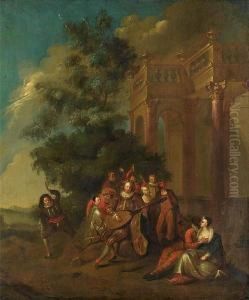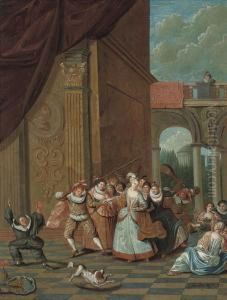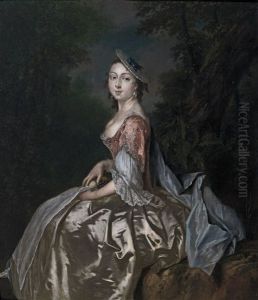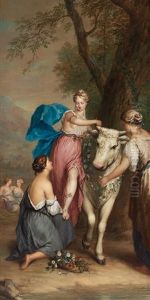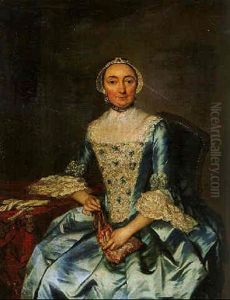George Van Der Myn Paintings
George Van Der Myn, also spelled George van der Mijn, was an 18th-century artist known for his portrait work. Born in 1686 in Amsterdam, Netherlands, he was part of a family of Dutch painters who were active during a time when the Dutch Republic was renowned for its cultural achievements, particularly in painting.
George was the son of the painter Herman van der Mijn and learned the art of painting under the guidance of his father. In the early 18th century, George, along with several of his siblings, followed in his father's footsteps and pursued careers as portrait painters. The van der Mijn family was a dynasty of artists, with George's brothers and sisters also achieving recognition for their artistic talents.
Seeking greater opportunities, George moved to London around the 1720s, which was a period when many foreign artists were drawn to the city due to the growing demand for portraiture among the British aristocracy and the burgeoning middle class. In London, George van der Myn established himself as a portraitist, painting the likenesses of the wealthy and influential. His work was characterized by a strong grasp of color and detail, with a particular talent for capturing the textures of fabrics and the subtleties of facial expressions.
Despite his success as a portraitist, George van der Myn is not as well-remembered as some of his contemporaries, such as Sir Joshua Reynolds or Thomas Gainsborough, who would dominate the British portrait scene later in the century. Nevertheless, his contributions to the art of portraiture in the early 18th century provided a link between the Dutch Golden Age style and the evolving British artistic preferences.
George Van Der Myn's life and career in London continued until his death in 1745. His legacy lives on through his portraits, which continue to be appreciated for their technical skill and their glimpse into the fashions and personalities of his time.
